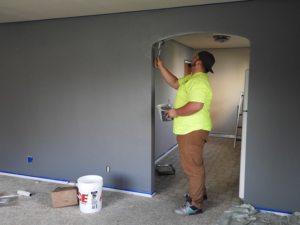
Veterans who have service-connected disabilities are eligible for disability compensation from the Department of Veterans Affairs (VA). The VA updates its pay chart annually to ensure that veterans are compensated appropriately based on changes in the cost of living. 2025 va disability pay chart: The Importance of Understanding VA Disability Benefits for Financial Planning Veterans and their families must help plan for their finances, and that is where the VA disability pay chart enters the equation.
What Is VA Disability Compensation?
VA disability compensation is a tax-free monthly benefit paid to eligible veterans for the remaining time of their lives who were injured as a result of their military service. The compensation amounts vary based on the veteran’s disability rating, which can range from 0% to 100% in 10% increments. The rating indicates the seriousness of the disability and its effect on the veteran’s day to day functioning.
2025 Cost-of-Living Adjustment (COLA)
The VA annually sets disability compensation rates every December based on the number set by the Social Security Administration (SSA) using the Cost-of-Living Adjustment (COLA). The COLA is tied to inflation, and it ensures veterans’ benefits keep up with increasing prices. For 2025, it is projected that the COLA will go up about 3.2%. * Such adjustment affects the 2025 VA disability pay chart, as a result, more attractions will give eligible veterans a higher paying monthly payment.
(Note: The precise COLA percentage can vary and should be verified with official sources.)
2025 VA Disability Pay Chart Summary
The VA disability pay chart lists the rate of pay the veteran will receive monthly, based on their disability rating and dependent status. Here is a detailed breakdown:
Monthly Pay Rates without Dependents
- 10% Disability Rating $165.92
- Disability Rating of 20%: $327.99
Dependent compensation is also available to veterans rated 30% and up, and includes spouses as well as dependent children and dependent parents.
2025 VA DISABILITY RATES WITHOUT CHILDREN
| Veteran Alone | Veteran with Spouse | Veteran Spouse & one Parent | Veteran Spouse and Two Parents | Veteran with one Parent | Veteran with Two Parents | |
| 100% | $3831.30 | $4044.91 | 4,216.35 | $4,387.79 | $4,002.74 | $4,174.18 |
| 90% | $2297.96 | $2489.63 | $2,643.38 | $2,797.13 | $2,451.71 | $2,605.46 |
| 80% | $2044.89 | $2214.89 | $2,351.89 | $2,488.89 | $2,181.89 | $2,318.89 |
| 70% | $1759.19 | $1908.19 | $2,028.19 | $2,148.19 | $1,879.19 | $1,999.19 |
| 60% | $1395.93 | $1523.93 | $1,625.93 | $1,727.93 | $1,497.93 | $1,599.93 |
| 50% | $1102.04 | $1208.04 | $1,293.04 | $1,378.04 | $1,187.04 | $1,272.04 |
| 40% | $774.16 | $859.16 | $927.16 | $995.16 | $842.16 | $910.16 |
| 30% | $537.47 | $601.42 | $652.42 | $703.42 | $588.42 | $639.42 |
| 100% | 90% | 80% | 70% | 60% | 50% | 40% | 30% | |
| Additional For A/A Spouses | $195.92 | $176.00 | $157.00 | $137.00 | $117.00 | $98.00 | $78.00 | $58.00 |
Veterans With Ratings Of 10%-20% Do Not Receive Extra Compensation For Dependents:
2025 VA Disability Rates with Children
| Veteran and Child | Veteran Spouse, & Child | Veteran Spouse, & Child, one Parent | Veteran Spouse, Child, Two Parents | Veteran, Child, one Parent | Veteran, Child, Two Parents | |
| 100% | $3,974.15 | $4,201.35 | $4,372.79 | $4,544.23 | $4,145.59 | $4,317.03 |
| 90% | $2,425.96 | $2,630.96 | $2,784.96 | $2,938.96 | $2,579.96 | $2,733.96 |
| 80% | $2,158.89 | $2,340.89 | $2,477.89 | $2,614.89 | $2,295.89 | $2,432.89 |
| 70% | $1,858.19 | $2,018.19 | $2,138.19 | $2,258.19 | $1,978.19 | $2,098.19 |
| 60% | $1,480.93 | $1,617.93 | $1,719.93 | $1,821.93 | $1,582.93 | $1,684.93 |
| 50% | $1,173.04 | $1,287.04 | $1,372.04 | $1,457.04 | $1,258.04 | $1,343.04 |
| 40% | $831.16 | $922.16 | $990.16 | $1,058.16 | $899.16 | $967.16 |
| 30% | $579.42 | $648.42 | $699.42 | $750.42 | $630.42 | $681.42 |
| 100% | 90% | 80% | 70% | 60% | 50% | 40% | 30% | |
| Each Additional Child Under Age 18 | $106.14 | $95.00 | $84.00 | $74.00 | $63.00 | $53.00 | $42.00 | $31.00 |
| Each Additional Schoolchild Over Age 18 | $342.85 | $308.00 | $274.00 | $239.00 | $205.00 | $171.00 | $137.00 | $102.00 |
Monthly Pay Rates with Dependents
- 30% Disability Rating: $508.05 base amount, plus extra for dependents.
- 50% Disability Rating: Payout of $1,041.82 (+dependents)
- 70% $1,683.80 Rate for Dependents
- 100% Disability Rating: $3,898.37 base rate, with large increases for dependents.
Of course, the actual amount the veteran is going to receive is going to vary based on the veteran’s individual circumstances such as the number of dependents and whether the veteran’s spouse is eligible for Aid and Attendance (A&A) benefits.
So what does make a difference in VA disability compensation?
How much disability compensation a veteran receives is different based on several factors:
1. Disability Rating
Based on the severity of the condition, the VA assigns a disability rating. The VA’s Combined Ratings Table can be used to combine ratings for multiple disabilities for a single veteran.
2. Number of Dependents
The rates are higher for veterans with dependents. Dependents include:
- Spouses
- Children under 18
- Students ages 18 through 23
- Dependent parents
- Special Monthly Compensation (SMC)
You may qualify for Special Monthly Compensation (SMC) if you are a veteran with certain disabilities, including the loss of a limb or the need for regular aid and attendance. This is an additional benefit on top of the typical disability compensation.
How to Calculate Your VA Disability Compensation for 2025
To estimate your expected monthly payment:
- Decide what your disability rating is.
- You are dependent status.
- Check out the 2025 VA disability pay chart to see what your corresponding rate is.
For example:
- The base rate for a veteran with a 50% disability rating, a spouse and one child would be $1,041.82, plus a supplement for the spouse and another for the child.
How to File for VA Disability Compensation
In order to receive disability compensation, veterans should file a claim with the VA. Here are the steps:
- Compile Documentation Make sure to gather all relevant medical records, service records, and other evidence to support your claim.
- Submit a Claim Claims may be filed online at the VA’s eBenefits portal, by mail or in person at a VA regional office.
- VA process for reviewing a claim and scheduling a C&P exam (if needed) and a disability rating
- Get a Decision Once your review is done, the VA will write up a decision explaining what your disability rating is and what your monthly compensation amount will be.
Frequently Asked Questions About the 2025 VA Disability Pay Chart
1. When Do the 2025 Rates Become Effective?
Veterans will receive the additional payments in their January 2025 checks, as the updated rates will go into effect Dec. 1, 2024.
2. What If I Do Not Agree With My Disability Rating?
If a veteran disagrees with his or her assigned rating, he or she can file an appeal. The VA’s appeals process enables veterans to appeal a decision; present new evidence; or have a case reviewed by a Veterans Law Judge.
3. What Is COLA And How Will It Impact My Benefits?
The COLA adjustment helps your benefits keep their purchasing power in the face of inflation. The COLA will increase monthly payments for all eligible veterans for 2025.
More Help for Veterans
Veterans looking for additional information on the 2025 VA disability pay chart and associated benefits can visit:
- VA Website: The official VA website has information that is current about disability compensation rates and eligibility criteria.
- Veterans Service Organizations (VSOs): Free help with filing claims and navigating the VA system can be obtained from VSOs like the American Legion and Disabled American Veterans (DAV).
- eBenefits Portal: An online platform that enables veterans to submit claims, view claim status and manage additional VA benefits.
Importance Note for veteran
When a veteran has disability, they do not have a VA funding fee.
Conclusion
The 2025 VA disability pay chart will give veterans and their families the information needed to plan their finances based on their VA disability rating. Keeping up to date on compensation rates and knowing what tools are available to them, this will ensure that veterans receive the benefits they deserve for their service. If you have questions or need help, contact the VA or a trusted Veterans Service Organization to help you navigate the process.


